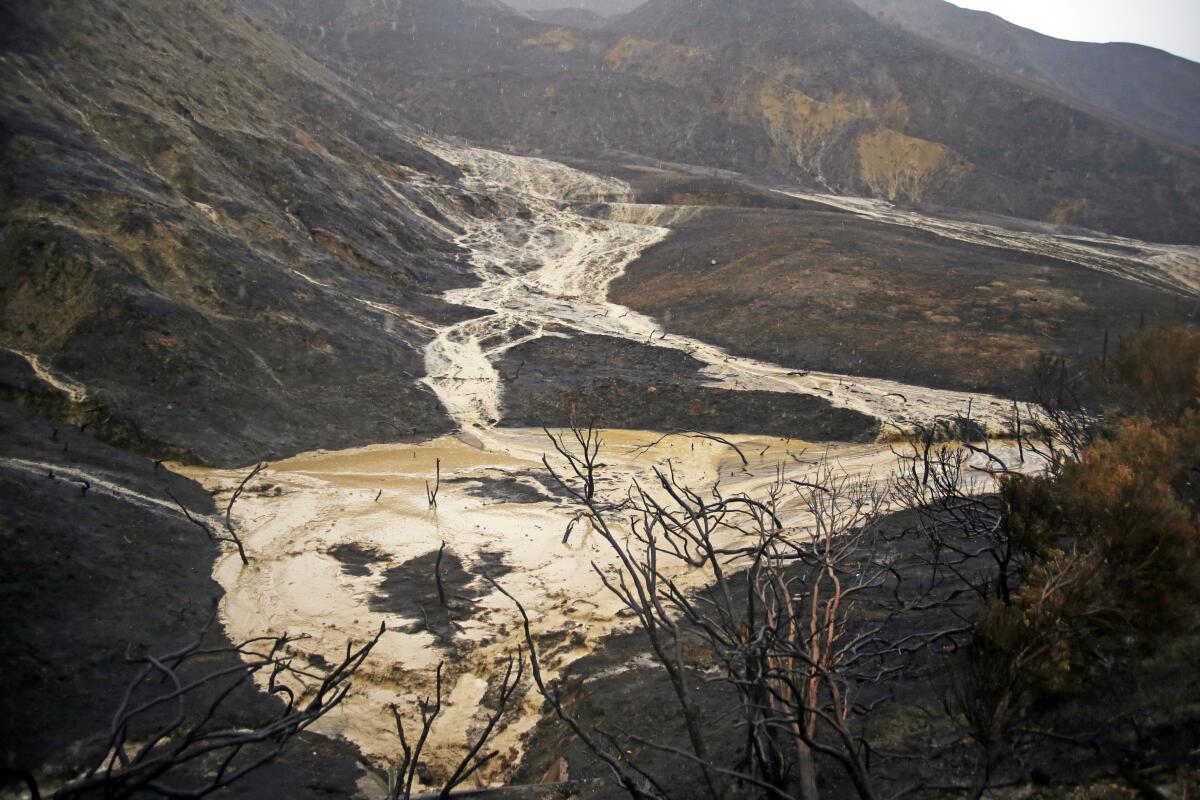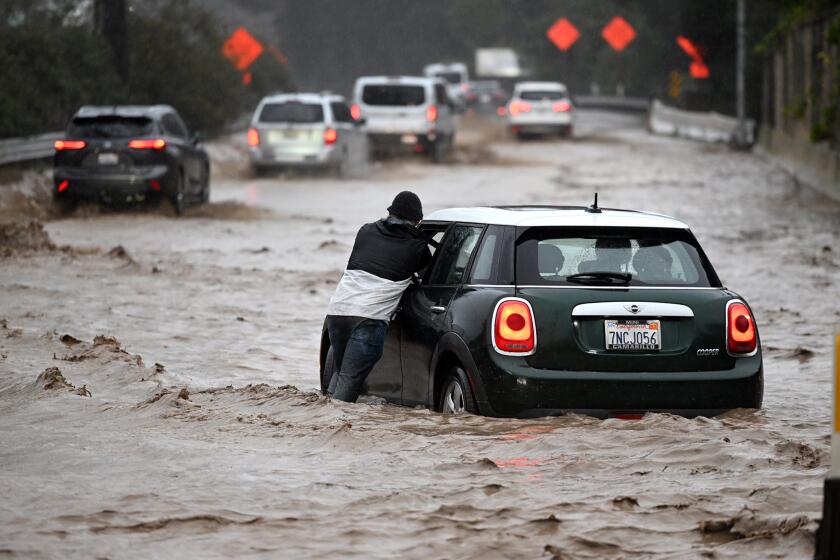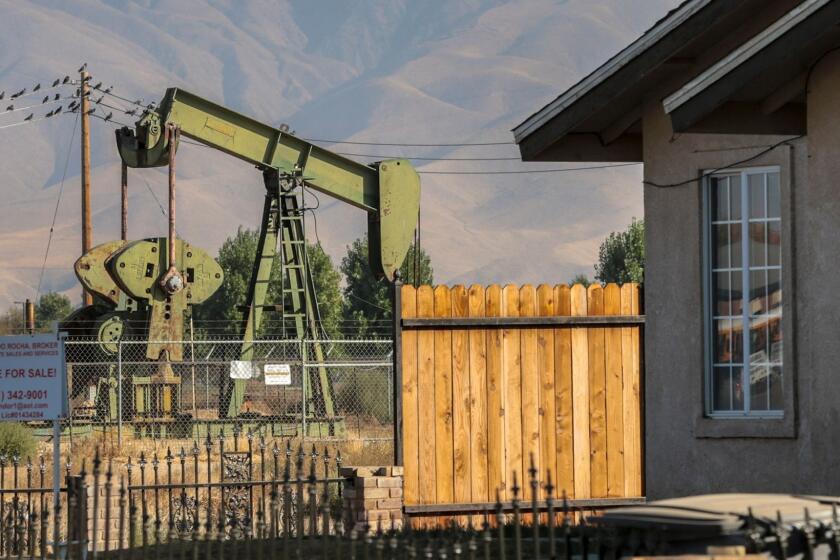El Niño is back. What does that mean for an already overheated California?

- Share via
During the El Niño of 1983, Californians counted their blessings. The warm Pacific waters sloshing eastward certainly brought heavy spring rains and record snow. But the state largely escaped the flood risks being frantically managed farther east.
That spring, engineers famously resorted to plywood to add just a few more inches to the 710-foot-high Glen Canyon Dam as they struggled to prevent the second-largest reservoir in the United States from being overtopped by El Niño-swollen waters. Back in California, a top flood official noted that it was “luck,” not preparation, that spared the state a similar fate.
El Niño, a climate pattern driven by shifts in winds and currents in the tropical Pacific Ocean, is the stuff of nightmares the world over: Widespread crop failures, famine, disease, floods, extreme heat, droughts, wildfires and even violent conflict have all been linked to the recurring climate anomaly. We have long known that climate variations alter our overall economic well-being. But by how much? Knowing the answer is essential to predicting the impact of global warming and evaluating the true cost of inaction on climate change, which exacerbates the repercussions of El Niño.
A spate of research has been chipping away at an answer, revealing that the costs of tropical cyclones, temperature changes, heat waves and floods are far higher than we realized, increasing both the cost of inaction and the need to rapidly mitigate and adapt to climate change.
We evaluated the global macroeconomic toll of El Niño and found that it’s far greater than previously understood. The global price tags of the 1983 and 1998 El Niño events, for example, are orders of magnitude higher than earlier estimates suggested, amounting to nearly $4.1 trillion and $5.7 trillion, respectively.
A strong El Niño could augur yet another wet winter for California, as well as drive the global average temperature to a record high, experts say.
These are startling figures. El Niño’s costs are so high because it is not just a short-term shock from which a region soon recovers. Rather, it depresses economic growth for up to a decade or more. The costs of this enduring damage compound and grow exponentially over time.
A proper accounting of the costs of El Niño, and of climate damage more broadly, doesn’t just consider direct damage from floods or droughts such as a washed-out bridge or diminished crop yield. It must contend with how the impacts of the phenomenon combine to depress long-term economic growth.
Our economic fate is tied to El Niño in many ways. Floods can endanger supplies of commodities and goods by halting mining operations and disrupting supply chains. Droughts can suppress water-intensive manufacturing and agricultural production. Weather disasters can lead to large insurance payouts with costs extending well beyond the event itself and throughout the global economy. All El Niño events are costly, and each El Niño is costly in its own way.
El Niño is expected to return this year. Policymakers, scientists, food security and development specialists, water managers and reinsurance firms are all bracing themselves for widespread weather and climate risks, including what is likely to be the hottest year on record, scorching past 2016 — the year of the last El Niño. If the median forecast for this year is correct, we anticipate that the global economy will face a more than $3-trillion setback over the next five years, predominantly due to losses in the tropical countries most affected by El Niño.
The governor declared victory after the Legislature’s special session on price gouging. But he could do a lot more to curb fossil fuel pollution.
Our global economy is far more vulnerable to climate than we realize. Luckily, scrutinizing the costs can help us prepare effectively.
First, we need to invest more in El Niño prediction and early warning. Peruvian potato farmers have shown that long-range forecasts allow for adaptation. More advance notice of the phenomenon can help us shore up infrastructure, agriculture, supply chains and insurance such as through catastrophe bonds.
These types of adaptation investments will have the additional benefit of improving our resilience against global warming. El Niño happens even in the absence of people and greenhouse gas emissions. But now each El Niño amplifies the impacts of global warming, from droughts afflicting Indonesian palm oil plantations to floods inundating Chilean copper mines. The consequences of El Niño look a lot like those of global warming, so reducing our vulnerability to the former will increase our collective readiness for the latter.
Lastly, estimates of the future costs of climate change must account for the phenomenon. According to our estimates, global-warming-driven changes to El Niño will reduce worldwide income by about $84 trillion by the end of the 21st century. This strengthens the imperative to reduce warming and its mounting costs.
Past El Niño events offer California and the nation a valuable lesson: Even if we set aside future warming, we are poorly adapted to the climate we have. Naturally occurring variations in weather and climate like those of El Niño can humble our infrastructure, depress our economies, increase the cost of our food and hurt people and communities. Climate has a way of highlighting our societal shortcomings, especially by reminding us who is most vulnerable and how we have failed to protect them.
In a cooler world, the costs of El Niño were enormous. In a warmer one, they’re higher still. We can no longer rely on luck alone to save us. Preparing California, the nation and the global economy for the risks we face begins with an honest accounting of the cost of inaction.
Justin S. Mankin is a geography professor at Dartmouth College. Christopher W. Callahan is a doctoral candidate in geography at Dartmouth.
More to Read
A cure for the common opinion
Get thought-provoking perspectives with our weekly newsletter.
You may occasionally receive promotional content from the Los Angeles Times.











